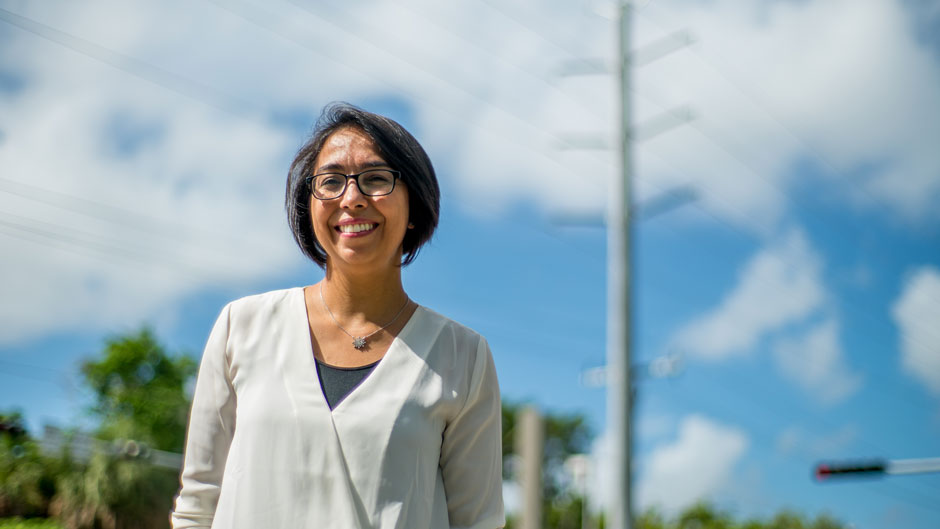Death and destruction was practically at her doorstep, but Nurcin Celik survived.
The 7.6-magnitude earthquake that devastated Izmit, Turkey, on August 17, 1999, killing thousands of people, could have easily been centered 50 miles farther west in Istanbul, where Celik and her family lived.
“I guess you can say we were lucky,” she recalled. “We still felt the effects. I remember the 30-some-odd seconds of violent shaking very distinctly. It was in the middle of the night, early morning actually. We came through it, but only a few minutes from where we lived, everything was flattened, destroyed.”
Celik was only a teenager back then, and knew very little about how natural disasters can disrupt the operations of a metropolitan area. But today, as an associate professor of industrial engineering at the University of Miami, she is studying ways to make cities more resilient, advancing smart-energy technology so that catastrophes like earthquakes and storms won’t cripple their critical infrastructure.
Through work being conducted at her Simulation and Optimization Research Laboratory at the College of Engineering, Celik and her team of scientists hope to improve the efficiency and dependability of microgrids, small-scale power systems that operate while connected to and in sync with centralized electricity networks but can function independently in emergencies.
“We want to see how microgrids can manage on their own in ‘island mode,’ not just how they operate while hooked up to the main grid,” explained Celik, who, along with a team of scientists, has been running micro-grid simulations in the lab for months now. “And one of the best things about microgrids is that they can easily integrate renewable energy sources like solar panels.”
Celik’s federally funded research is gaining traction. In 2017, President Barack Obama honored the young researcher with a Presidential Early Career Award for Scientists and Engineers, the highest honor bestowed by the United States government on science and engineering professionals in the early stages of their independent research careers.
Her work is important because it can potentially save lives. Super storms like Hurricanes Irma and Maria and earthquakes like the one that struck Izmit nearly 20 years ago will always occur, damaging a municipality’s main power source. But microgrid technology can help keep the emergency systems of cities up and running during such times of crisis, Celik said.
She is partnering with Coral Gables on the Bloomberg American Cities Initiative, integrating a smart solar-powered microgrid that will prioritize power distribution in the City Beautiful during emergencies to ensure that operations such as public safety services aren’t disrupted.
“Disasters happen, but the goal is that once they do happen, we should be able to take action immediately. The Northeast blackout was so big because no action was taken,” she said, referring to the 2003 widespread power outage throughout parts of the Northeastern and Midwestern United States and the Canadian province of Ontario.
Celik’s work is all part of the smart-city movement, an initiative to use electronic data collection sensors to monitor and supply information on virtually all aspects of a city—from the flow of pedestrian traffic at intersections to noise and weather conditions.
“I see big cities as these very large and heavy operational structures,” said Celik. “So to make them smarter takes a lot of effort and time. There are some cities that are doing an effective job at this—New York, Boston and Los Angeles, for example. But there’s still a lot to be done.”

